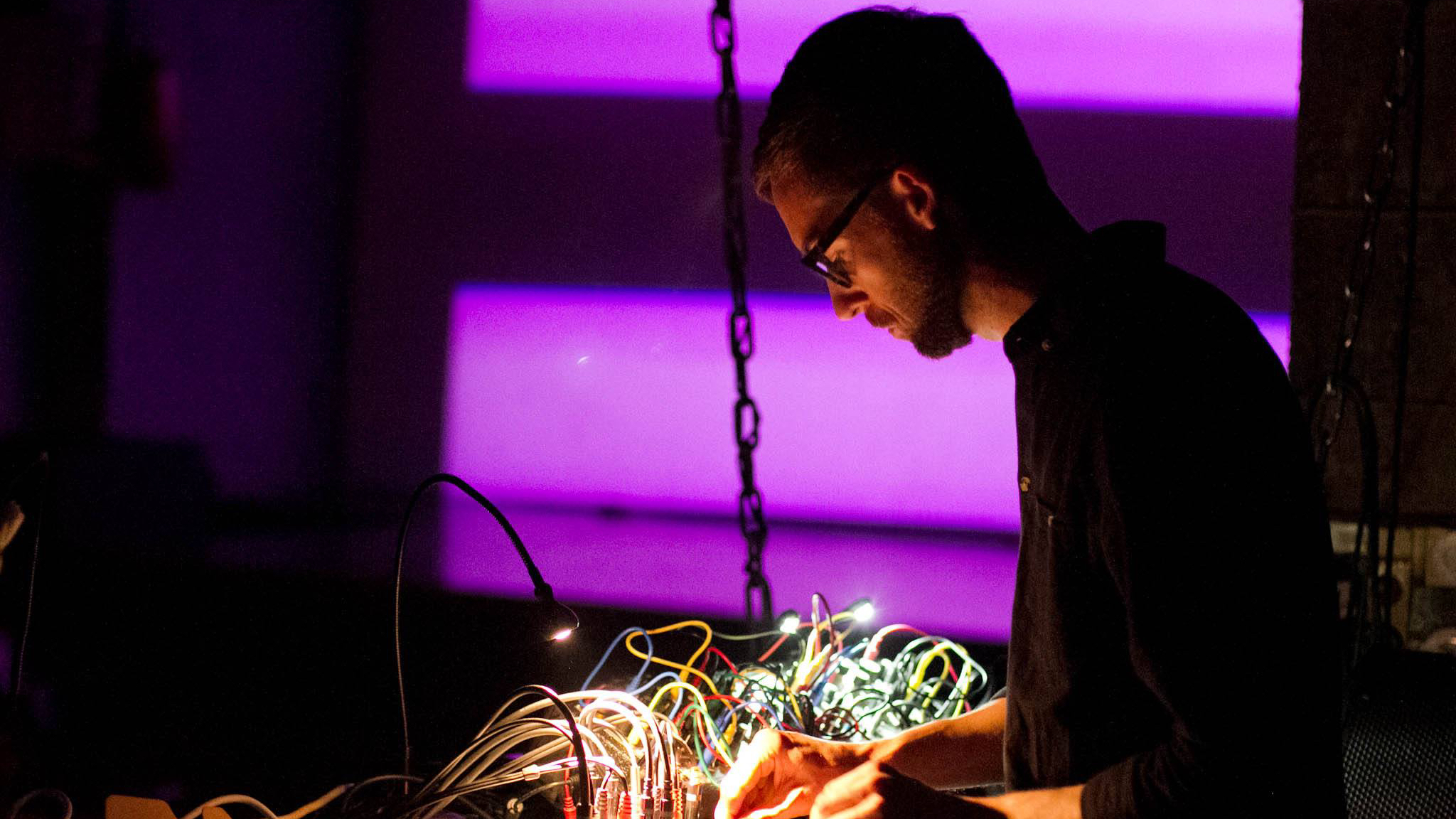 photo by Pavlo Shevchuk
photo by Pavlo Shevchuk
Mads Emil Nielsen talks about his work Framework 3, about the use of graphic scores, spatiality in his music, pulsation and sound qualities. Interview by Andrea Neumann.
Listen to Framework 3 (Radio Version) here: http://laborsonor.de/interviews/ (scroll down to MADS EMIL NIELSEN).
A.N. I hear in your music a strong relation to space. If you agree could you describe how you create the impression of space with acoustic means?
M.E.N. I tend to work with very dry sounds, coming from the electronics/synthesizers I use. Indeed, I’m interested in creating a sense of space and three-dimensionality in these short pieces and stereo recordings, and live versions. I often do that by recording and playing back multiple extractions or “shadows” based on the main recordings, and then work with their placements and presence, distance. To combine very dry and “digital” sounds with more blurry, undefinable layers—with no effects at all vs. very long and short reverbs. In Framework 3, the first part which was based on a live recording of short sounds / feedback, certain elements are manipulated by this short, metallic sounding reverb, and the sound of the room is there as well, being mixed in and out. The recordings were based on simple drawings / graphic scores. The scores almost always consist of multiple sheets of transparent paper, layered and then scanned, so I use that as inspiration and “instructions” for this layering of sound.
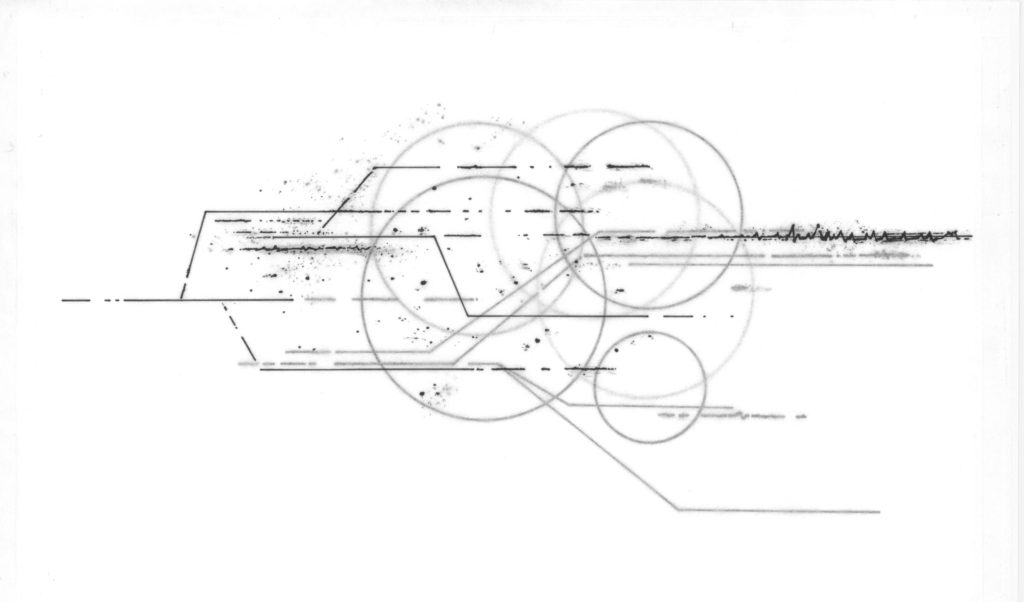
“Circles (Framework 2)” by M.E.N.
A.N. In Framework 3 there is never a dominant beat but a lot of different pulsations. Could you say something about your approach to repetition, pulse, beat—what interests you?
M.E.N. I guess it’s a visual approach again, I always imagine some kind of drawing or combination of lines and symbols, and I’m inspired by artists working with pulse, beat, tempo in a more abstract way. I’ve always been occupied with repetition and rhythm, also by listening to lots of repetitive, loop-based electronic music, but I was never very interested in more or less fixed grids, or in working with a fixed bpm. When working with these pulsations and repetitions, it gives my ears something to follow, allowing these more uncontrolled things, changes in effects etc. to happen around it; hopefully for the listener too. A teacher I had at the conservatory in Copenhagen talked a lot about this slow whole note triplet… Without thinking too much about it, I guess I always follow that somehow. I start hearing new things, and start focusing on texture, each sound, space, when certain sounds and parts get repeated or looped, or when some pulsation is always there, so for me it’s very important.
A.N. Could you describe the sound qualities in Framework 3 and how you chose them?
M.E.N. I wanted to work with very basic electronic sound sources: sine waves, feedback, noise, and a few synthesizer recordings made at EMS, and to see how far I could go with just that. I used this as a limitation, but I also chose to work with these sounds since, to me, they have a certain “visual” quality. I tried to directly translate different elements in the drawings/sketches into specific types of sounds. In the second part, each color became a pitch—and back to the pulsations and repetitions, I worked with short percussive sounds, but it started with this direct translation, the sine waves and feedback tones. In order to choose the sounds, and how to play and work with them, I used the introduction / instructions for Framework:
A circle should be seen as a space, room or atmosphere.
A line illustrates direction / time, and possibly a sustained tone.
Smaller dots or points may be read as dust, drops, texture or granulation.
An incomplete circle or square marked with an arrow signifies a loop / repetition,
which consists of certain elements, if notated.
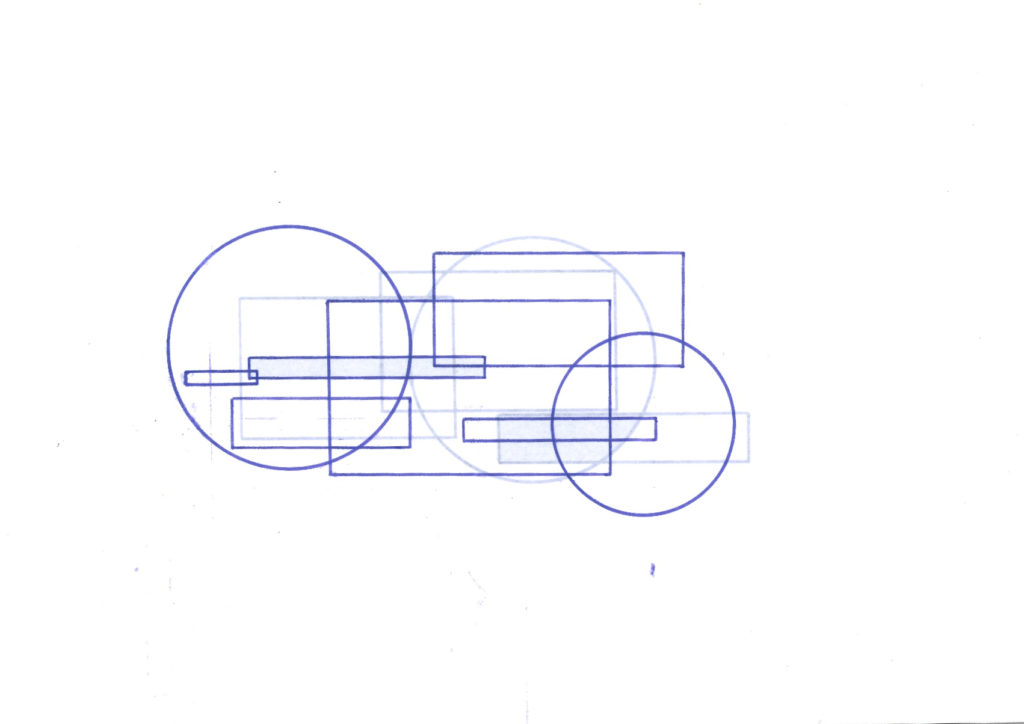
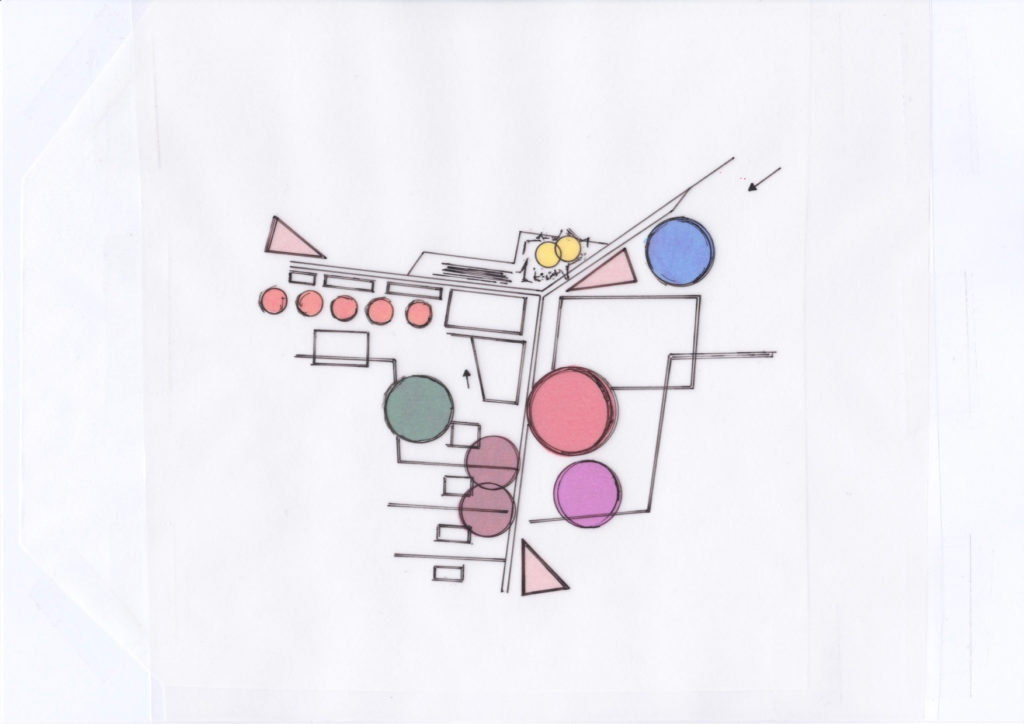
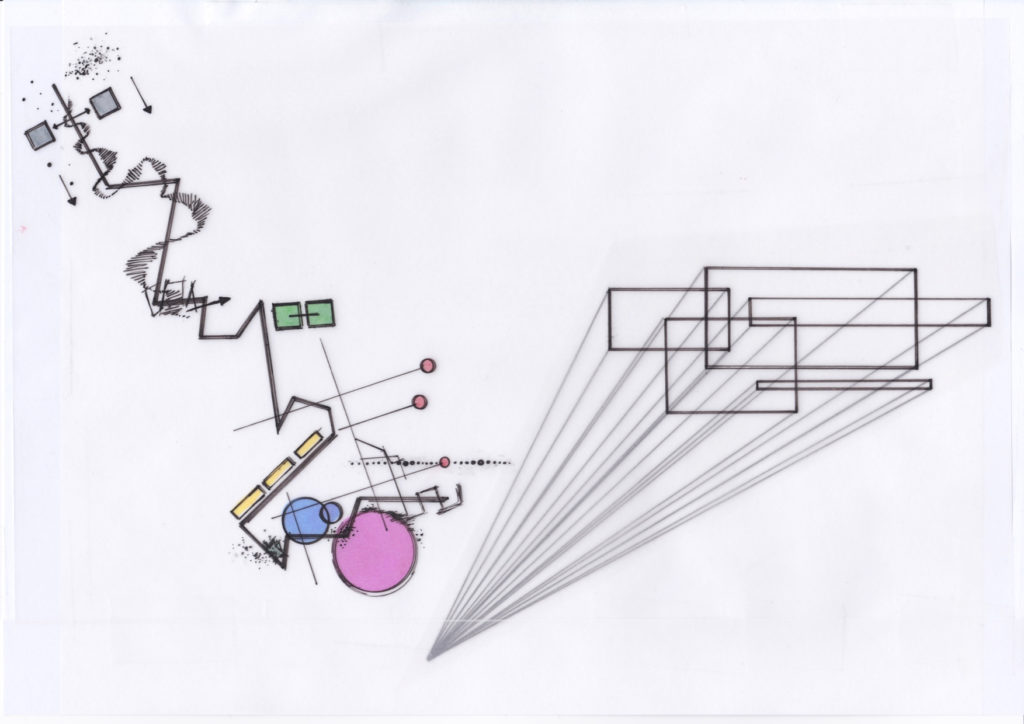
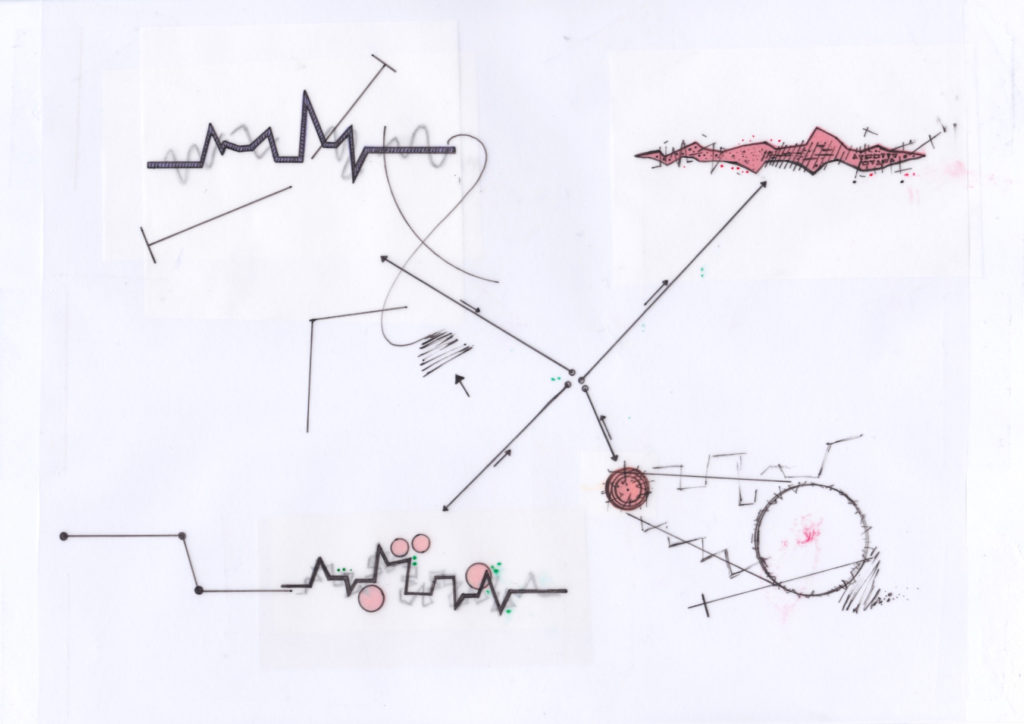
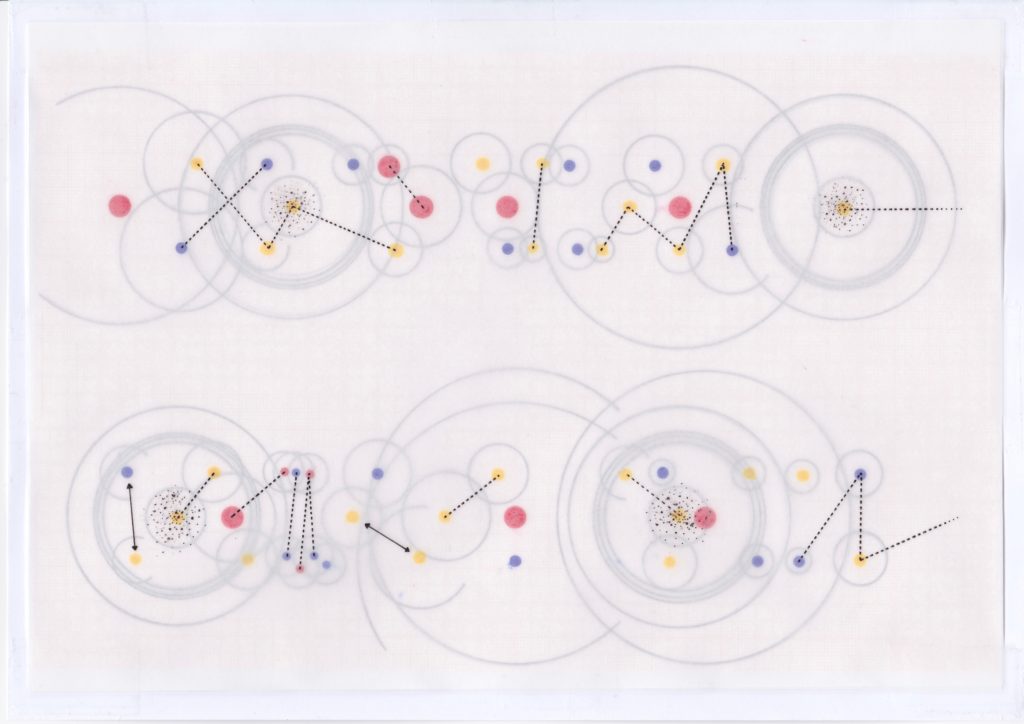
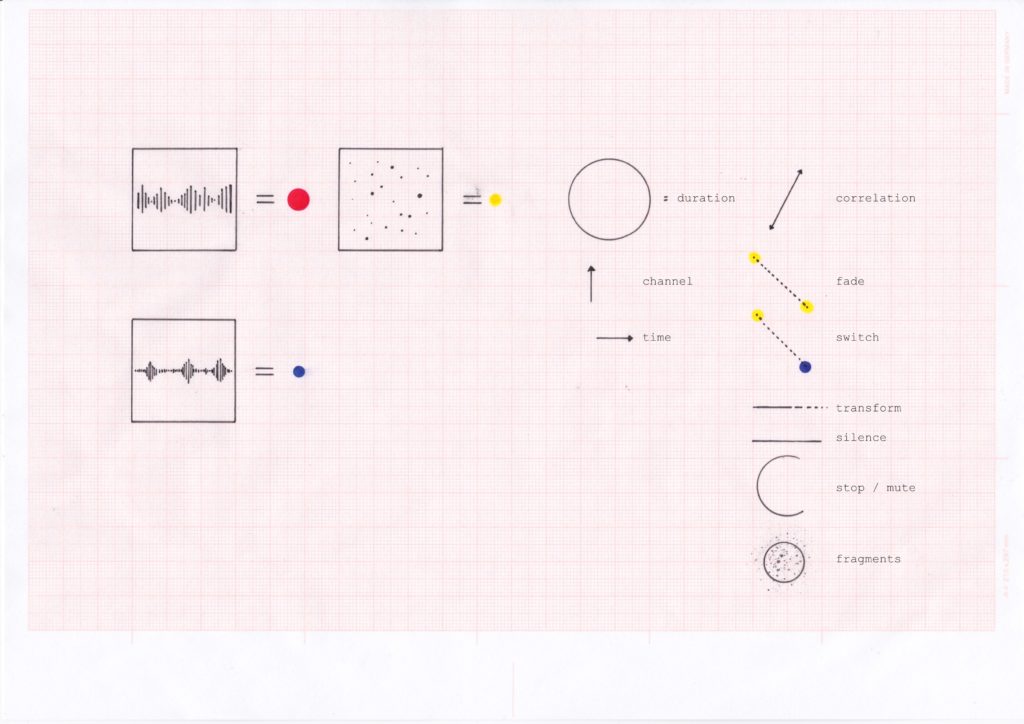
“Scores / sketches for Framework 3” by M.E.N.
